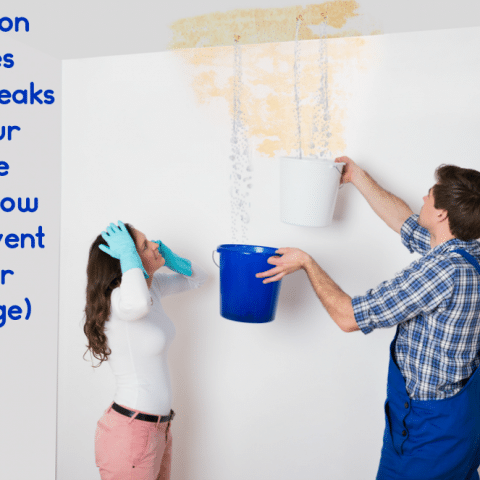6 Ways to Find Concealed Water Leakages in Your House
6 Ways to Find Concealed Water Leakages in Your House
Blog Article
Listed here down the page you'll find additional quality points in relation to Leaking water lines.

Early discovery of dripping water lines can minimize a possible catastrophe. In addition to conserving you money, it will decrease the irritation and disappointment. The moment you find a leakage, calling your plumber for fixings is the best option. However, some little water leaks might not show up. If you can not detect it with your nude eyes, below are some hacks that assist.
1. Examine the Water Meter
Every residence has a water meter. Inspecting it is a surefire manner in which assists you discover leaks. For starters, switch off all the water resources. Make sure no person will flush, make use of the tap, shower, run the cleaning machine or dishwashing machine. From there, most likely to the meter and also watch if it will transform. Since nobody is utilizing it, there ought to be no activities. If it relocates, that shows a fast-moving leakage. Similarly, if you detect no changes, wait an hour or two and also examine back once more. This indicates you may have a sluggish leakage that might also be below ground.
2. Examine Water Intake
If you detect abrupt adjustments, in spite of your usage being the very same, it implies that you have leaks in your plumbing system. An abrupt spike in your costs indicates a fast-moving leak.
A stable rise every month, also with the very same routines, shows you have a slow-moving leak that's also slowly intensifying. Call a plumber to extensively examine your home, particularly if you feel a cozy area on your floor with piping underneath.
3. Do a Food Coloring Examination
When it comes to water usage, 30% comes from commodes. If the color somehow infiltrates your bowl throughout that time without flushing, there's a leak between the storage tank and also dish.
4. Asses Outside Lines
Do not fail to remember to check your outdoor water lines also. Examination spigots by connecting a garden hose. Must water permeate out of the link, you have a loosened rubber gasket. Replace this and make sure all connections are tight. If you have actually obtained a lawn sprinkler, it will assist get it properly analyzed and preserved annually. One tiny leakage can squander lots of water and also increase your water costs.
5. Examine the situation as well as evaluate
House owners ought to make it a habit to examine under the sink counters as well as also inside cupboards for any bad odor or mold growth. These 2 warnings indicate a leakage so prompt attention is needed. Doing routine assessments, even bi-annually, can conserve you from a major issue.
Check for discolorations and damaging as the majority of devices and pipes have a life span. If you believe leaking water lines in your plumbing system, do not wait for it to escalate.
Early detection of leaking water lines can alleviate a potential disaster. Some little water leaks might not be noticeable. Checking it is a proven method that aids you uncover leakages. One tiny leak can squander heaps of water and also spike your water costs.
If you presume leaking water lines in your plumbing system, do not wait for it to escalate.
How to Know If Your Home Has a Hidden Leak
Water Meter Reveals Inexplicable Water Usage
If you’d like to test whether or not there’s a leak somewhere in your home, you can do this using your water meter. Here is how to conduct the test:
Don’t use any water in your home for at least 30 minutes; this also means not turning on faucets or water-using appliances.
Go outside, and check your water meter for activity.
If your water meter shows that there was activity, even though no one was using any water, this proves that there is a leak in your home.Visible Mold or Mildew Growth
Leaks behind walls create moist, dark environments that allow mold and mildew to grow and thrive. Eventually, you might see mold growth forming on the wall closest to a hidden leak.
If mold is growing in an area that receives a high amount of moisture, such as a bathroom, it may simply be an indication that better ventilation is needed. However, if you see mold growth on a wall or the ceiling in an area where you would not expect, you probably have a hidden leak.
Musty, Mildew Odor
Sometimes you might not be able to see the mold or mildew that is growing as a result of a leak. However, the smell can give the problem away just as easily. If you catch a whiff of something musty, there’s a good chance that old water is collecting somewhere in your home that you can’t see.
Stained/Warped Walls, Ceilings, or Floors
When your home soaks up water, a variety of red flags can become visible, including ceiling stains, bubbling drywall, warped walls, and sagging floors. While these issues can be caused by excess humidity, they can also be signs that a pipe or plumbing connection has started leaking behind your walls.
Inexplicably High Water Bill
After a while, you get a general sense for what your water bill should be. If you own a pool or sprinkler system, your bill will tend to be higher during summer. However, if you receive a water bill that seems especially high, and you can’t figure out what caused it, then you may have a hidden leak somewhere that’s increasing your bill.
https://www.plumbingjoint.com/blog/2019/july/how-to-know-if-your-home-has-a-hidden-leak/

As a person who reads on Locating water leaks, I figured sharing that portion was worth the trouble. Liked our post? Please share it. Let other people find it. Thank-you for taking the time to read it.
Report this page